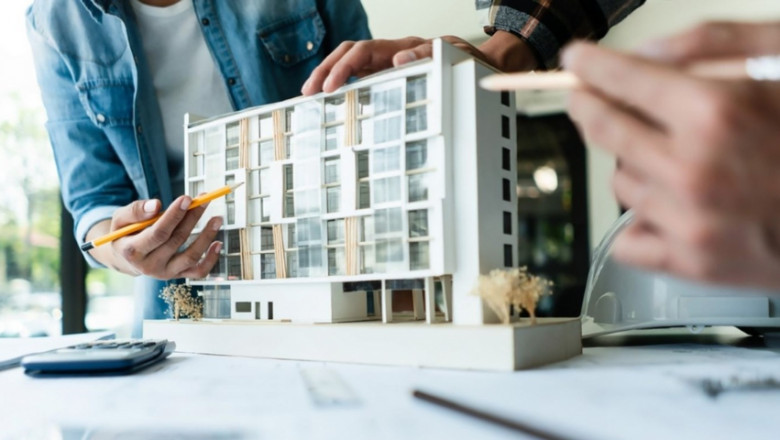views
Miniature model making for Dubai Marina projects is a detailed process. It involves precision, creativity, and advanced tools. As Dubai continues to expand its skyline and marina developments, model makers are turning to modern solutions.
One such innovation is AI-driven design software. This technology is transforming how miniature models are conceptualized, designed, and executed. From automation to data integration, AI is becoming an essential part of the model-making process in the region.
Streamlining Concept Development
AI-driven design software can generate multiple design concepts within seconds. It uses algorithms and data inputs to suggest building shapes, layouts, and spacing. For Dubai Marina projects, this speeds up the early planning phase.
Designers can input zoning regulations, tidal limits, and plot sizes. The AI then produces several viable configurations. This allows model makers to choose the best design before building the miniature version. It reduces trial and error and saves both time and money.
Enhancing Accuracy in Scale Modeling
Accuracy is critical in miniature model making Dubai. Buildings, roads, canals, and boats must be modeled to scale. AI software can process large datasets and automatically adjust proportions. For example, if a marina tower design changes, the AI updates the surrounding environment accordingly. This ensures the model remains consistent and correct. It also minimizes human error during manual adjustments.
Incorporating Real-Time Data
One of the biggest advantages of AI in model making is its ability to process real-time data. In Dubai Marina, tidal patterns, traffic flow, and sunlight exposure all affect the design. AI tools can use this data to inform the miniature model.
For instance, if a new yacht dock is planned, the software can simulate how it interacts with current water levels. This gives a more accurate and functional representation of the real-life project.
Optimizing Structural Layouts
AI is useful in structural optimization. It identifies weak points in a design or suggests better spatial layouts. In Dubai Marina, where space is limited and value is high, every square meter counts. AI can recommend how to organize towers, parking, green areas, and walkways efficiently. This helps model makers showcase smarter urban layouts in their miniatures. These layouts often lead to improved final construction results.
Boosting Visual Realism
Visual realism is important in miniature models. Clients and investors expect to see accurate and beautiful displays. AI-driven software supports photorealistic rendering and simulation. It can generate lifelike textures, lighting, and shadows.
These visual cues help model makers create models that resemble the final project more closely. In Dubai Marina, where luxury and aesthetics matter, this is a major advantage.
Assisting in Customization and Detailing
Every project in Dubai Marina has unique features. Some buildings are inspired by waves. Others mimic sails or coral reefs. AI tools help customize these designs easily. Designers can tweak curves, materials, and details without starting from scratch. This makes it easier for model makers to replicate intricate elements. The result is a miniature model that is rich in detail and character.
Reducing Production Time
AI reduces the overall production time of models. Once the design is finalized, the software can export files directly for 3D printing or CNC cutting. This cuts down manual drawing and measuring. Model makers in Dubai benefit from faster turnarounds. This is especially helpful when presenting at exhibitions or launching sales campaigns for new waterfront properties.
Improving Collaboration Between Teams
Model making is a team effort. Architects, engineers, urban planners, and model makers must work together. AI design platforms often include cloud-based features. These allow team members to view updates in real-time.
Changes in one area automatically reflect across the project. This level of integration enhances teamwork and ensures everyone stays on the same page. For large-scale Dubai Marina projects, this makes coordination smoother.
Simulating Environmental Effects
Dubai Marina projects are exposed to various environmental elements. These include wind, sunlight, and sea spray. AI software can simulate these conditions. Model makers can then decide which materials or textures to use. For example, a sun-facing building might need a specific reflective surface. The miniature model can show this adjustment clearly. This makes the model not just beautiful, but also smart and relevant.
Creating Interactive Models
Some AI-powered tools allow for interactive miniature models. These models respond to touch, light, or sound. In Dubai’s real estate market, such interactive displays attract attention. AI software helps embed sensors and motion elements into models. A yacht may move, lights may change based on time of day, or elevators might animate inside skyscrapers. These features impress clients and add value to presentations.
Conclusion
AI-driven design software is reshaping miniature model making for Dubai Marina projects. It brings speed, accuracy, and intelligence to every stage of the process. From generating early concepts to delivering interactive displays, AI adds depth and quality.
As Dubai continues to grow as a global waterfront hub, the demand for detailed and futuristic models will rise. AI will play a central role in meeting this demand. It allows model makers to keep up with complex designs, environmental factors, and client expectations. In the future, AI will not just assist but become essential to miniature model making in Dubai.














Comments
0 comment